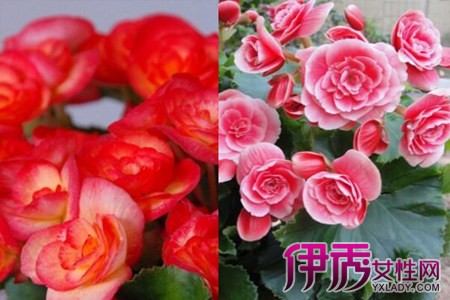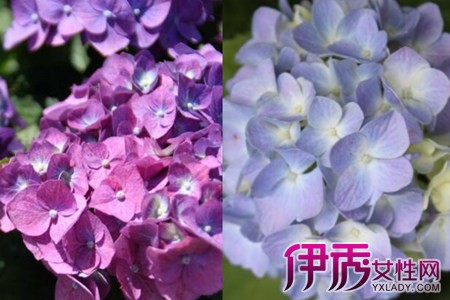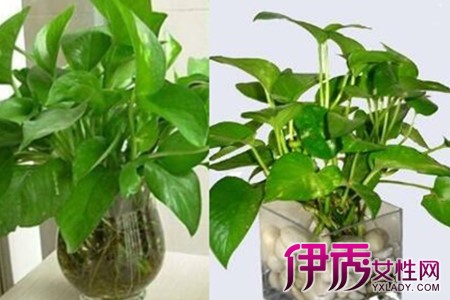Know the breeding methods and matters needing attention of Rieger Begonia and be a flower-growing professional

In fact, it is not difficult to cultivate Rieger Begonia, but many people do not understand its habits, so they always feel that there are always problems in breeding. Rieger Begonia has high requirements for soil quality. When breeding Rieger Begonia, we should choose soft black soil to let it grow normally, otherwise the roots will rot.
Choose to cultivate Rieger crabapple flowerpot is not too large, probably choose 20-30cm diameter flowerpot can. In this way, the soil can supply the normal growth of Rieger Begonia, and the porcelain basin can be chosen to look much cleaner. But be sure to choose a breathable flowerpot with a hole in the bottom. Because the roots of Rieger Begonia turn black if they are not breathable.
When raising it, we should also pay attention to the tricks of watering. Rieger Begonia itself does not like water. So just water it once in about 5-7 days, and don't water too much each time. If there are too many water leaves, there will be some redness and black spots. When watering, take a look at not watering as long as the soil in the flowerpot is not dry.
It is also important that Rieger Begonia should pay attention to the effect of heat preservation, and do not put it outside when the outdoor temperature is low in winter. Rieger crabapple should be put indoors in order to grow better, once frostbite is basically impossible to recover. Can only re-cuttage culture, Rieger Begonia like the temperature of about 22 degrees is more appropriate.
And when it is in bloom, it likes to attract bugs very much, and the leaves are yellow and sticky. In this case, you must be sprayed with insecticide, after spraying insecticide, do not spray water immediately will affect the effect of insecticide. These are the breeding methods of Rieger Begonia. Mastering these, your Rieger Begonia will blossom more vigorously.
Culture methods and matters needing attention of Rieger Begonia
Rieger Begonia, also known as Rose Begonia, is an improved hybrid variety. Its flowering in winter makes it very popular in the New year flower market. However, the beautiful Rieger Begonia is not easy to raise, or even a little delicate. If you don't pay attention to the breeding method after buying it home, the leaves will fall after a few months. Therefore, it is necessary to understand its growth habits and master certain culture methods. The following is to introduce the culture methods and matters needing attention of Rieger Begonia.
First, the basic introduction of Rieger Begonia
1. The shape of Rieger Begonia
Rieger Begonia is a perennial herbaceous plant. It is a group of winter flowering hybrid varieties derived from the winter flowering of Soko Begonia and many kinds of bulbous begonias. It belongs to the root system, full plant shape, long flowering period, heart-shaped simple leaves, green leaves, brown flowers, multiple flowers, flowers, red, orange, yellow, white and so on.
2. Price of Rieger Begonia
Rieger Begonia potted plant is a new kind of potted plant variety which has developed rapidly in recent years. Its size is different and its price is slightly different. The average price of Rieger Begonia small potted plant on the market is about 4 yuan.
3. Seeds of Rieger Begonia
Rieger Begonia is a hybrid breed, although it generally does not bear seeds, it also has seeds. The seeds are very small, and the seeds are basically imported, sub-coated and uncoated. If you want to sow seeds with small seeds, you have to mail-order the original packaged and undamaged seeds from large flower and tree companies in order to ensure germination.
4. Is Rieger Begonia poisonous
Rieger crabapple is non-toxic and its tender stems are edible. The French even use its leaves for vegetables, roast fish or soup.
Second, the culture method of Rieger Begonia
1. Temperature
Like warmth, it is a quantitative short-day plant in greenhouse, the suitable temperature for growth and development is 18 ℃ ~ 22 ℃, and it is in the period of growth and flowering in winter. to ensure that the lowest temperature is not lower than 15 ℃, it should be placed indoors facing south, such as on the indoor windowsill. When the summer temperature is higher than 28 ℃, cooling measures should be taken, such as putting it in an air-conditioned room or shading at noon.
2. Watering
Like to be moist, according to the principle of dry and wet and climatic conditions to determine the amount of water. More water is needed when the water evaporates quickly in summer, it is watered sooner or later, and the watering times are determined according to the wettability of the basin soil. Spray the leaves regularly to keep the air humid, but avoid spraying water on the flowers. Watering at noon on a sunny day when the temperature is low in winter, the watering times should be reduced appropriately, and the water temperature should be close to the room temperature, so as to avoid frostbite.
3. Fertilization
Rieger Begonia has strict requirements for fertilizer, which should be applied thinly, so we can choose the special fertilizer for Rieger Begonia cultivation. In order to promote growth and development, seedlings can use nitrogen fertilizer, with plant growth, can gradually increase the content of phosphorus and potassium fertilizer, increase the amount of fertilizer before flowering, but also properly and evenly spray foliar fertilizer on both sides, the concentration can be controlled at 1%-2%.
4. Integer pruning
In order to make the plant type plump, coring should be carried out during the growth period to promote the plant to germinate lateral branches, and the excess buds should be removed in time to ensure adequate nutrients.
5. Cuttage propagation
When pruning and shaping in late autumn and early winter, new branches can be cut off as cuttings by cutting branches or leaves. When inserting branches, the branches should be of moderate length, and the lower part of the branches should be cut into horseshoes; when inserting leaves, six mature leaves with vigorous growth should be selected and the lower end of the petiole should be obliquely cut with a blade. Cuttings should prepare a good substrate, after cutting should be watered, covered with plastic film, placed in a ventilated, astigmatic place for maintenance, about 3 weeks cuttings or cuttings can root.
The branches and leaves, buds, inflorescences and flowers of Rieger Begonia have high ornamental value. After learning the breeding method, you can add a distinctive demeanor to your room, and you no longer have to worry about good decorations.
Culture methods and matters needing attention of Rieger Begonia
Rieger Begonia is colorful and festive, with a short time from planting to flowering, large and lively. It is a common boutique of flowers in the main room, and it is a new type of potted plant favored by flower friends. So is Rieger Begonia easy to raise?
If you want to raise Rieger Begonia well, you have to do the following steps:
1. Soil:
Planting Rieger crabapple had better provide it with better drainage, try to loosen some fertile soil, do not use garden soil, and this kind of soil had better contain rich humus. You can go to the field to collect the soil covered with fallen leaves and litter and add enough base fertilizer to mix it, or it can be made of ellipse, peat soil, vermiculite, perlite, carbonized bark and so on.
two。 Watering:
Rieger Begonia is a plant that likes a warm and humid environment, so the basin soil should be kept moist, neither dry nor too wet. Because of the high temperature in summer, you need more water, so you can water it in the morning or evening, but do not pour water on the leaves, you can choose to soak the basin. The best choice for watering in winter is at noon on a sunny day, and the water humidity is best close to room temperature.
3. Lighting:
It likes to grow in a semi-shaded growth environment, so it can be put directly on the windowsill near the bedroom side of the closed balcony during the winter growth season; but in summer, it is necessary to move to a more cool and ventilated place for breeding, but it also needs a little scattered light source from time to time to provide it with heat in order to grow healthily.
4. Temperature:
Rieger crabapple is the most suitable temperature for growth is 18 ℃ ~ 22 ℃, it is afraid of both cold and high temperature, so we should pay attention to keep warm in winter, the lowest temperature must not be lower than 15 ℃, otherwise the whole plant will die, we should prepare the greenhouse; when there is a high temperature lasting more than 28 ℃ in summer, we should take cooling measures or put it in an air-conditioned room for breeding.
5. Diseases and insect pests:
This kind of plant is not easy to produce diseases and insect pests because of its growth characteristics, and if it happens, it is best to use physical methods to drive it away, after all, it is home-raised flowers. Ginger juice can be squeezed with water and sprayed at 1:25 to prevent soft rot and other pathogenic spore germination.
6. Fertilization:
Rieger crabapple needs plenty of fat and water during its growing period, so soaking liquid of soybeans or fermented rice panning water can be applied every two weeks or so when you are at home. These natural ingredients can also give it sufficient nutrients to maintain its normal development. Of course, in addition, phosphorus and potassium fertilizer can also be applied, and nitrogen fertilizer is the main fertilizer in the seedling stage.
As long as it is cultivated properly, Rieger Begonia has luxuriant plants, various colors and plump plants, which can produce flowers in red, white, yellow, orange and other colors, and it is the most ideal plant variety to beautify the home with short days from wood to flowering, long flowering period and large flower diameter.
- Prev

It is not difficult to know the characteristics and growth habits of eight Immortals and to cultivate flowers and plants.
The eight Immortals are very beautiful and have a lot of fragrance. Many people like to breed them at home. However, many people do not have a good grasp of the characteristics of the culture of the eight Immortals. In fact, it is not difficult to master the habit of breeding the eight Immortals.
- Next

What matters should be paid attention to in the method of hydroponic culture of green pineapple
Now many companies can see the figure of green apple, its green always brings us vitality. Not only can make the indoor air fresh and natural, and the vitality is very tenacious. Editor, let's teach you how to cultivate green pineapple in water.
Related
- Fuxing push coffee new agricultural production and marketing class: lack of small-scale processing plants
- Jujube rice field leisure farm deep ploughing Yilan for five years to create a space for organic food and play
- Nongyu Farm-A trial of organic papaya for brave women with advanced technology
- Four points for attention in the prevention and control of diseases and insect pests of edible fungi
- How to add nutrient solution to Edible Fungi
- Is there any good way to control edible fungus mites?
- Open Inoculation Technology of Edible Fungi
- Is there any clever way to use fertilizer for edible fungus in winter?
- What agents are used to kill the pathogens of edible fungi in the mushroom shed?
- Rapid drying of Edible Fungi

